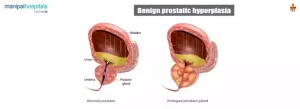Prostate Artery Embolisation (PAE): A Non-surgical Treatment Option For Benign Prostatic Hyperplasia

Prostate problems are common in older men, often requiring surgical intervention. Prostate Artery Embolisation (PAE) is a non-surgical treatment option, offering hope and relief to countless individuals grappling with enlarged prostate issues.
Understanding Prostate Problems
The prostate, a gland roughly the size of a walnut, is situated just beneath the bladder and is vital for maintaining male reproductive health. With age, the prostate can enlarge, leading to Benign Prostatic Hyperplasia (BPH).
The enlarged prostate presses against the urethra. This compression can result in a range of urinary problems, including frequent urination, weak urine flow, difficulty starting and stopping urination, and even urinary retention. Traditionally, surgery has been the primary treatment option for BPH when symptoms become severe.
What is Prostate Artery Embolisation (PAE)?
Prostate Artery Embolisation is a revolutionary, minimally invasive day-care procedure offering a non-surgical BPH solution. Skilled interventional radiologists perform this minimally invasive technique with the expertise to precisely target the root of the problem. PAE primarily works by reducing the blood supply to the enlarged prostate, which causes the prostate to shrink, relieving urinary symptoms.
What Are the Steps Involved in PAE?
Your interventional radiologist will insert a small catheter into your wrist or groin artery to perform PAE. Here’s a step-by-step explanation of how PAE works:
Preparation: The doctor assesses medical history, conducts physical exams, and uses imaging studies for prostate examination. Patients are provided instructions on fasting and medication.
Anaesthesia: Typically, the doctor administers local anaesthesia to numb the area, with occasional intravenous sedation given by the anaesthetist for specific cases.
Arterial Access: A small incision in the groin or wrist provides the doctor with access to the arterial system using a thin catheter.
Micro Catheter: The catheter is carefully navigated using fluoroscopy to the prostatic arteries.
Embolic Agent Injection: Injecting the embolic agent into prostatic arteries to create blockages in smaller vessels reduces blood flow to the enlarged prostate, prompting the prostate tissue to shrink over time.
Monitoring: The doctor continuously monitors the procedure with fluoroscopy to ensure proper embolic agent distribution.
Completion: Upon completion, a medical professional removes the catheter, and the access site is closed with an adhesive bandage.
Recovery: After the procedure, the doctor may monitor the patient briefly for immediate complications. Most patients go home the same day.
Follow-Up: The patients are advised to follow up with their doctor for progress monitoring, as the improvement may take several weeks.
What Are the Advantages of PAE?
Advantages of PAE include:
Non-surgical: PAE eliminates the need for traditional surgery, making it an attractive option for those who are opposed to surgery or are medically unfit for surgery.
Minimal Discomfort: The procedure can be performed under local anaesthesia through tiny pinhole access in either the groin or the wrist, ensuring minimal discomfort for the patient.
Minimal Bleeding: PAE leads to very little bleeding compared to the conventional surgical procedure.
Same-Day Discharge: Most patients can be discharged on the same day as the procedure, as opposed to the longer hospital stay required after surgery.
Reduced Complications: PAE has a track record of avoiding many complications that may arise after surgery, enhancing the overall safety of the treatment.
What Are the Contraindications for PAE?
Certain situations and medical conditions may make PAE less appropriate or contraindicated. Here are some common scenarios in which PAE may not be recommended:
Extremely small prostates where surgical options may be better
Prostate cancer cases
Those with severe allergies, uncontrolled bleeding disorders, or high-risk medical conditions
Cases where the blood supply to the prostate is inadequate or very difficult to access.
Active urinary or prostate infections; antibiotic treatment may be needed first.
Severe bladder problems that may not respond well to PAE alone.
Success Rate and Patient Satisfaction
PAE has demonstrated impressive success rates, achieving technical success in over 90% of patients. Patient satisfaction is another crucial aspect of PAE. More than 80% of patients experience extremely satisfying results after undergoing PAE underscoring the life-changing impact of this innovative procedure.
Prostate Artery Embolisation (PAE) is a non-surgical treatment method performed by skilled interventional radiologists. With its high success rates, minimal discomfort, and potential for same-day discharge, PAE is transforming prostate treatment.
Visit Manipal Hospitals Sarjapur Road to consult the best interventional radiologist in Bangalore for your BPH-related concerns.
FAQs
1. What is Prostate Artery Embolisation (PAE)?
PAE is a non-surgical procedure to reduce an enlarged prostate’s size by cutting off its blood supply, leading to its shrinkage and relief from urination problems. For more information on Prostate Artery Embolisation (PAE), visit Manipal Hospitals Sarjapur Road to seek consultation with our best interventional radiologists in Bangalore.
2. Who can undergo PAE?
A consultation with an Interventional Radiologist is vital. The procedure’s success hinges on proper patient selection following standard guidelines.
3. What if PAE doesn’t provide the desired results?
One of PAE’s benefits is that it doesn’t exclude future surgical interventions. If PAE doesn’t offer expected outcomes, surgical options remain open.
